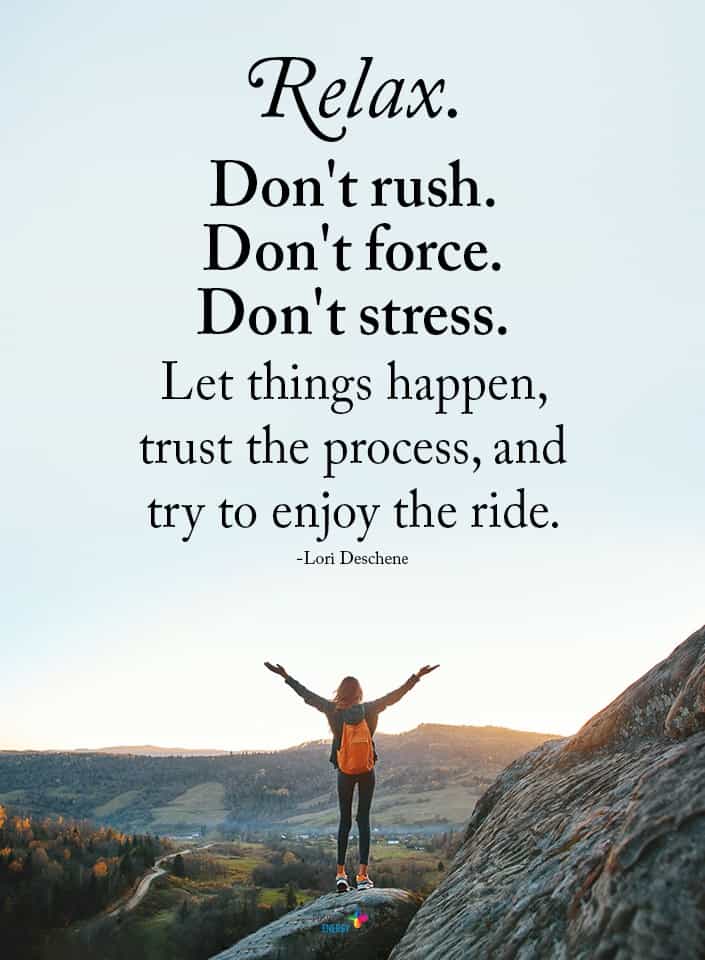Do you know what it means to utilize mindfulness techniques? These are little tricks that help you to control your emotions. When you are mindful, you’re in a state where you know what’s going on around you.
This is a term that is often used in the mental health industry as it’s a powerful word that can help improve your psychological and physical well-being. However, do you truly know what mindfulness is, and even if you understand the concept, how do you become more mindful?
Understanding Mindfulness
When you’re mindful, you are aware of where you are and what you’re doing. You must learn to be aware of your thoughts and your feelings without judging yourself or becoming critical.
Much research has been conducted on this topic. There’s even a thing called your mindfulness journey. Even though you know what it means, how can you put it into use in your life?
You get in your car every day for your drive to the office. The worst part of this commute is traffic jams and road construction along the way. It’s not uncommon for someone to cut you off, and you automatically assume that this person is rude and has no respect for others.
The truth of the matter is this person is probably a genuinely nice individual. They may be running late, or they could have a family emergency. When you get all fired-up, your emotions surmise stuff that will cause you to react. One small incident on the interstate can make you stressed out for the rest of the day.
What you don’t see is that you’re changing your neurological wiring, and these behaviors could become a long-term issue. Have you ever ridden in a car with someone who has road rage?
They may yell at other drivers, give inappropriate gestures, and seem huffy even if things aren’t that bad. Road rage is a perfect example of an individual who has rewired their brain to be on high alert and look at every incident on the roadways as problematic.
To counteract this negative attitude that’s been developed, incorporating mindfulness techniques can help. How do you become mindful when sitting in your automobile? Well, first, you should notice how your hands feel when you touch the steering wheel.
Next, you should feel the temperature in the car. Take notice of the noises on the outside and inside of the vehicle. Additionally, become aware of the seat that you’re utilizing. While these are some simple ideas, the goal is to make sure that you know what’s going on around you.
Ten Mindfulness Techniques
The next time someone cuts you off or nearly rear-ends your vehicle, you can learn to control your impulsivity. Mindfulness techniques are tools that you can use at any time and anyplace. Here are the ten psychologist-recommended hints to help you stay calm and focused.
1. Learn to Meditate
In today’s world, people are stressed to the max. One of the best ways to combat that stress is through meditation. When it comes to mindfulness techniques, meditation is one of the best.
The entire practice helps you to focus on what’s going on around you and to learn to release things that bother you one by one. If you’re a beginner, you may want to use a guided variety to help you stay on track.
Thankfully, there are all sorts of ways that you can use the practice of meditation to release stress and become more mindful of your current surroundings. Another term you may frequently hear is the practice of grounding.
2. Go for a Walk
Speaking of grounding, there’s something amazing about walking outside and enjoying the beauty of Mother Nature. Have you ever heard someone say they are going to take a walk to clear their head? It’s because of the fresh breeze, warm rays of the sun and the smells around you can be incredibly therapeutic.
The next time you’re outside and walking, you should take off your shoes. Grounding yourself is best done by feeling your bare feet against the earth. When you are present in the moment, you are letting go of all the things that hold you back.
Nature is an excellent teacher that helps you to reset your system. If you’re looking for mindful techniques that provide instant gratification, then walking barefoot among the soil is an excellent place to start.
3. Write it All Down
Journaling is good for people who love to write. If you don’t like to write, then you could try typing your thoughts too. Journaling is a mindfulness technique that helps you write heavy or even confusing things to you.
Writing down your thoughts and feelings is like keeping a diary, but there are many ways that you can journal. You can use this method as if you’re writing a letter to a friend or writing to yourself.
It’s a great tool that allows you to go back through the pages and see your growth and get things off your chest. It’s an excellent outlet for stress relief too.
4. Spend Time with a Pet
Do you have a dog or cat that you engage with daily? Did you know that pets help you to have positive energy? Animals love you, unconditionally, and they do not know your failures.
When life gets to be too much, then you can always cuddle with your pet. These animals will help you to become deeply rooted at the moment. If you feel like you’re in mental overdrive, then you need to spend time with a furry friend.
Animals have been proven to be great at helping relieve stress. They are used in nursing homes for patients with Alzheimer’s and other diseases to calm stress and increase mindfulness.
Why not incorporate two mindfulness techniques together by taking your dog outside to play catch, or you can take your pup on a walk?
5. Enhance Your Culinary Abilities
Nothing takes more focused attention than cooking. What are some of your favorite comfort foods? Even if you’re not the best cook, you can still whip up some magic by watching an online tutorial.
Cooking is a good mindfulness technique that gives you a direct connection between food and the nourishment it provides. When you cook something that you make all the time, it’s really cooking on a whim.
However, when you get a recipe and try something new, you must focus your attention. You take a mindful approach when you are cooking something that you stored in your brain. While you’re cooking, make sure you smell each vegetable and fruit, and you should pay attention to the noises of the utensils and the veggies frying in the pan.
Be aware of all the emotions that come up when preparing your meal and let it work all your senses.
6. Be Aware of How You Eat
This mindfulness technique goes along with cooking. While you’re eating, you should let all your senses experience the foods. Let’s assume that you have spaghetti and meatballs for dinner.
Before you take your first bite, you should smell the food. Does it smell sweet or spicy? Next, when you put the food into your mouth, notice how it feels on your tongue? Is it hot or lukewarm?
It would help if you never had the television blaring or watching a video on your phone while eating as it’s distracting. Make sure you pause between each bite so you can savor the flavors and the experience. Weight loss programs often tell people to chew each bit ten times and take a sip of water after each bite.
Don’t be in a big rush to get through your meals. Take your time and savor each flavor and other sensory experience eating offers.
7. Stop the Mental Chatter
Everyone has mental chatter inside their brain that is very distracting. You may be attempting to listen to your boss during a meeting, but all you hear is what you need to do when you get off work. During that hour’s conference, you’ve already planned dinner and what movie you’re watching before bed.
When you become active in co-listening, it can help your personal and professional relationships. When you zone out of a conversation, you will not get what the other person is trying to convey. You must hold the space of time in your life for the individual that is sharing with you.
Please notice the person who’s speaking and their body language, tone, and any hand gestures. Do they talk with their hands? When you use the mindful technique of co-listening, then you are saying to the universe that you deserve the same respect when you are speaking.
8. Practice Intention Setting
Before you begin your workday, you need to center yourself. You must set aside time each morning to declare your intentions and clear your mind. Some people start by doing yoga or reading an inspirational quote. Take ten minutes in the morning and settle your mind to focus on the tasks you must accomplish.
9. Play the Name Game
One of the best mindfulness techniques that can help you to have focused attention is to play Eye Spy. Remember playing this game as a child? Did you know that when people play the name game, it can calm anxiety and even stop a panic attack?
The key is to become aware of your surroundings. Start by examining your environment. If you’re in a supermarket and panic starts to come over you, you should identify where you are.
Tell yourself things like, “I am at the store in aisle four, and I am fine.” “I see the deli worker making cakes, and I smell the chicken cooking too.” Make sure to identify what you see, hear, taste, smell, and can touch.
It will help you become mindful of your surroundings and refocus the brain from panic or other feelings onto something positive.
10. Engage in Breathing Exercises
Sometimes you must stop and breathe. Inhale deeply to the count of seven, hold it for the count of seven, and then release the breaths. Do this about 5-6 times, and you will calm your mind, body, and spirit.
 Final Thoughts on Using Mindfulness Techniques to Stay Calm and Focused
Final Thoughts on Using Mindfulness Techniques to Stay Calm and Focused
Mindfulness exercises are tools that help you to stay present in the here and now. You can do these exercises to help focus whether you’re at work, on the freeway, or chatting with a loved one. Mindfulness has a significant benefit on your mental, physical, and emotional health, and should be practiced daily.





















